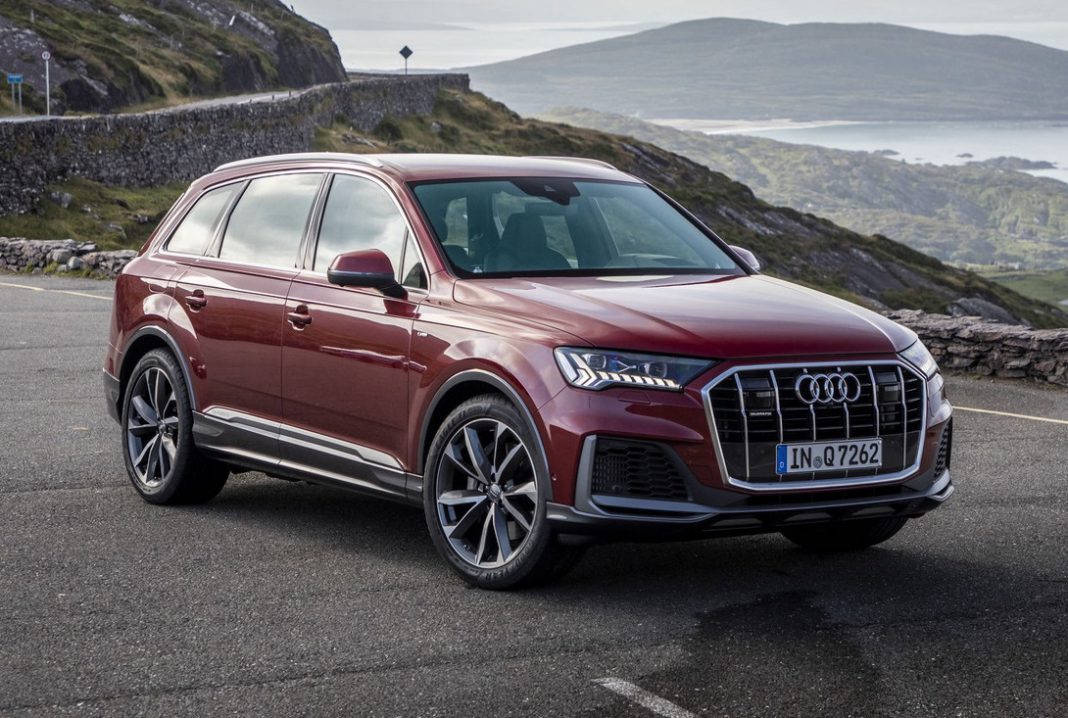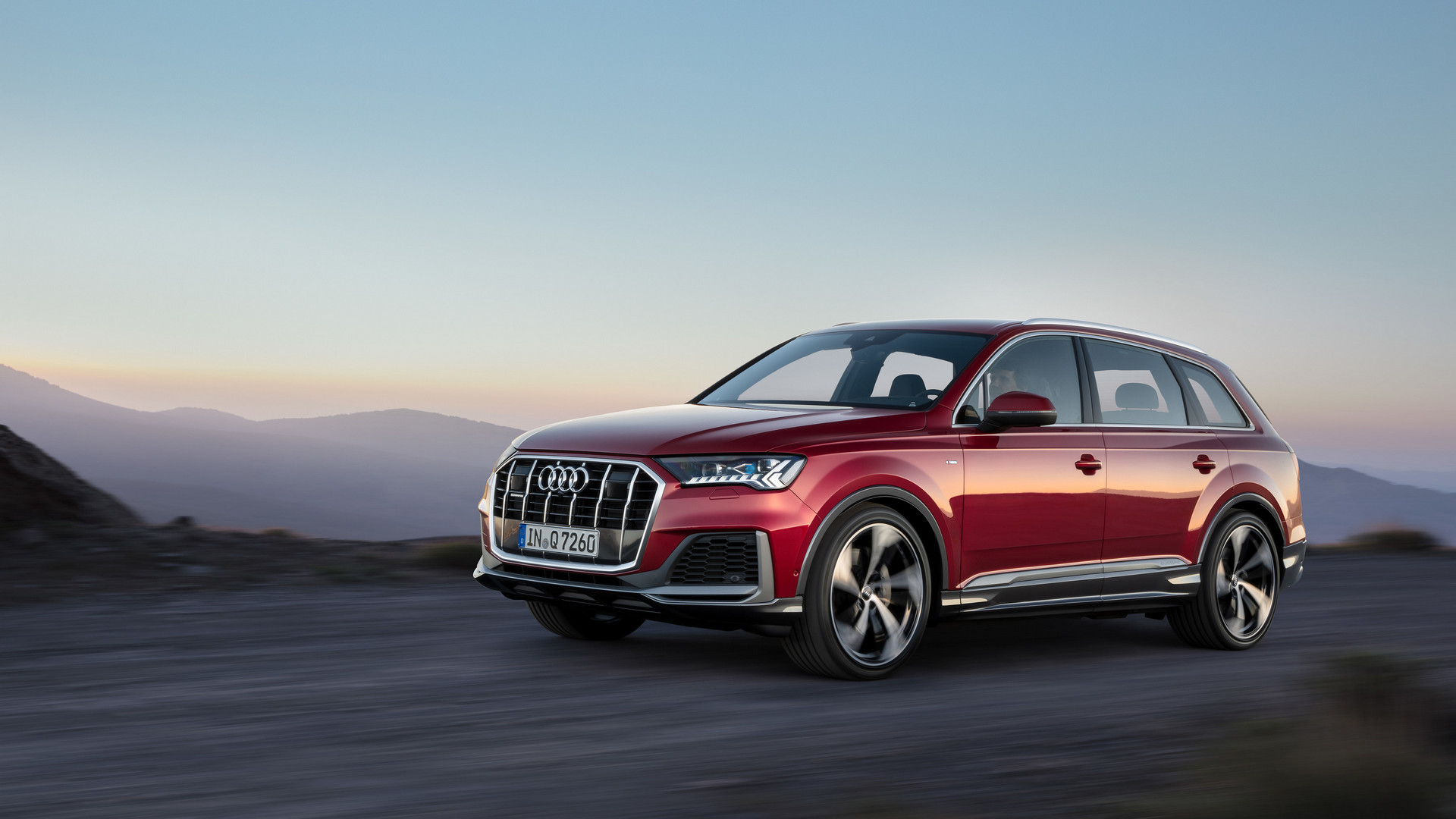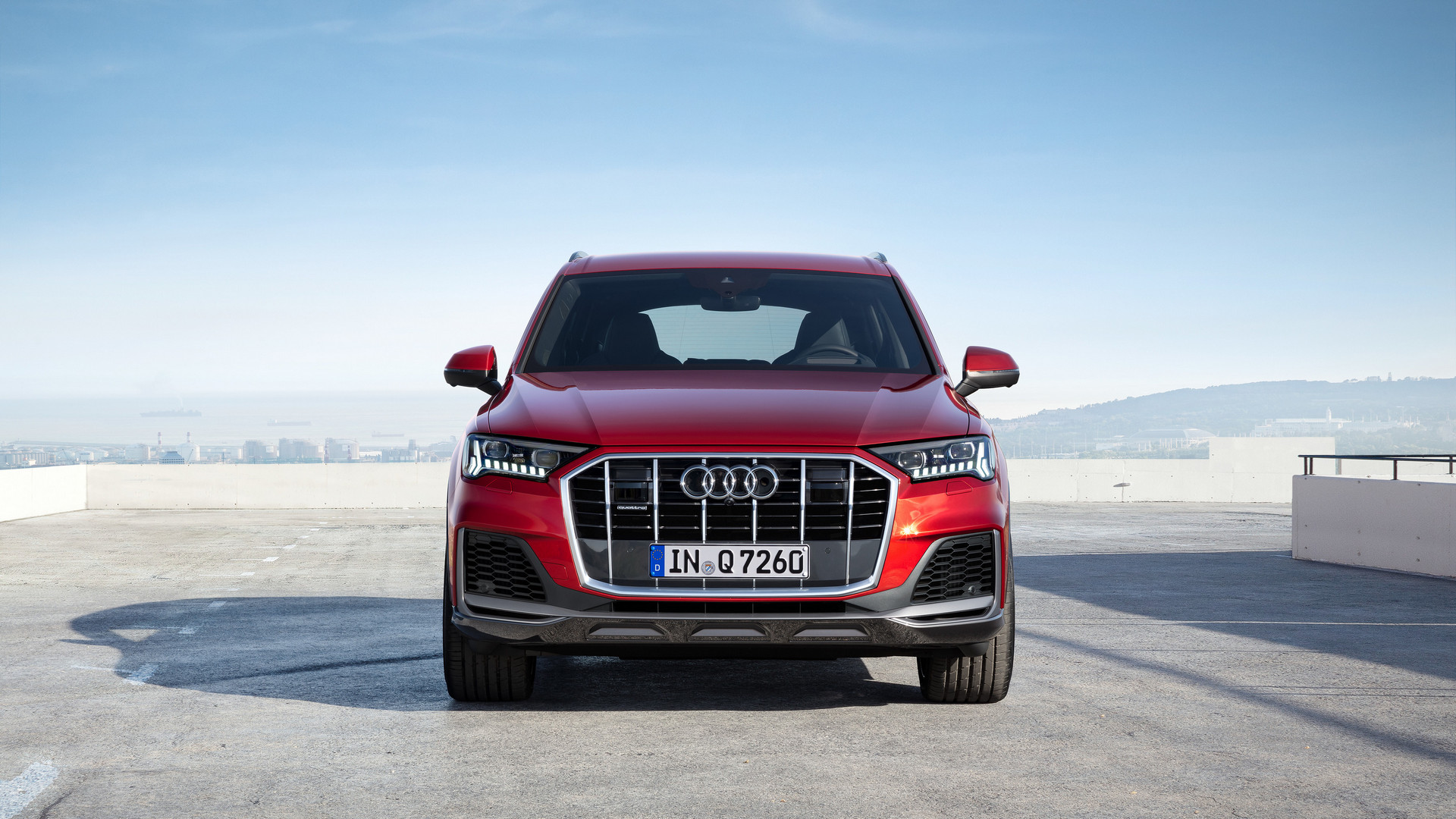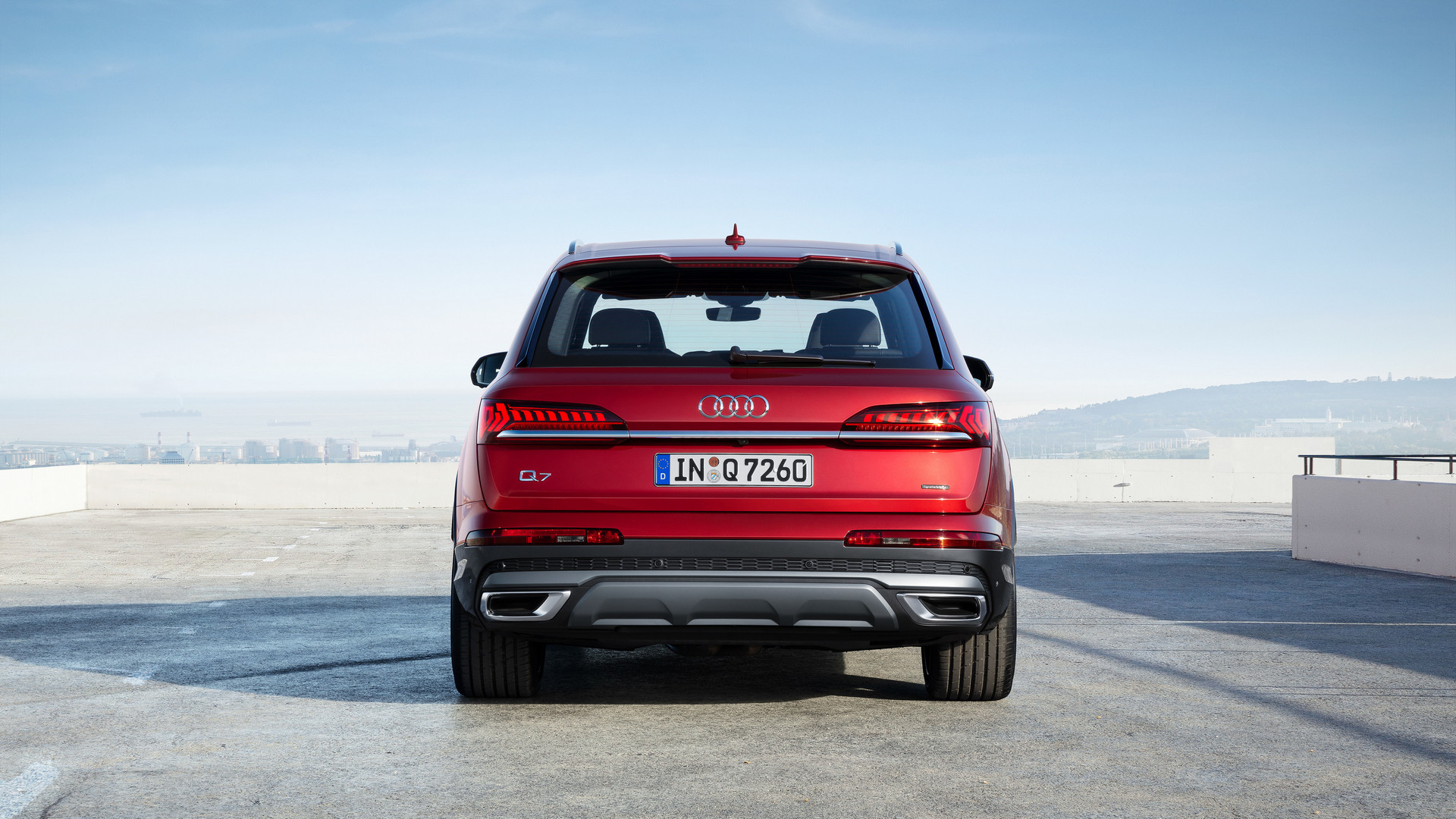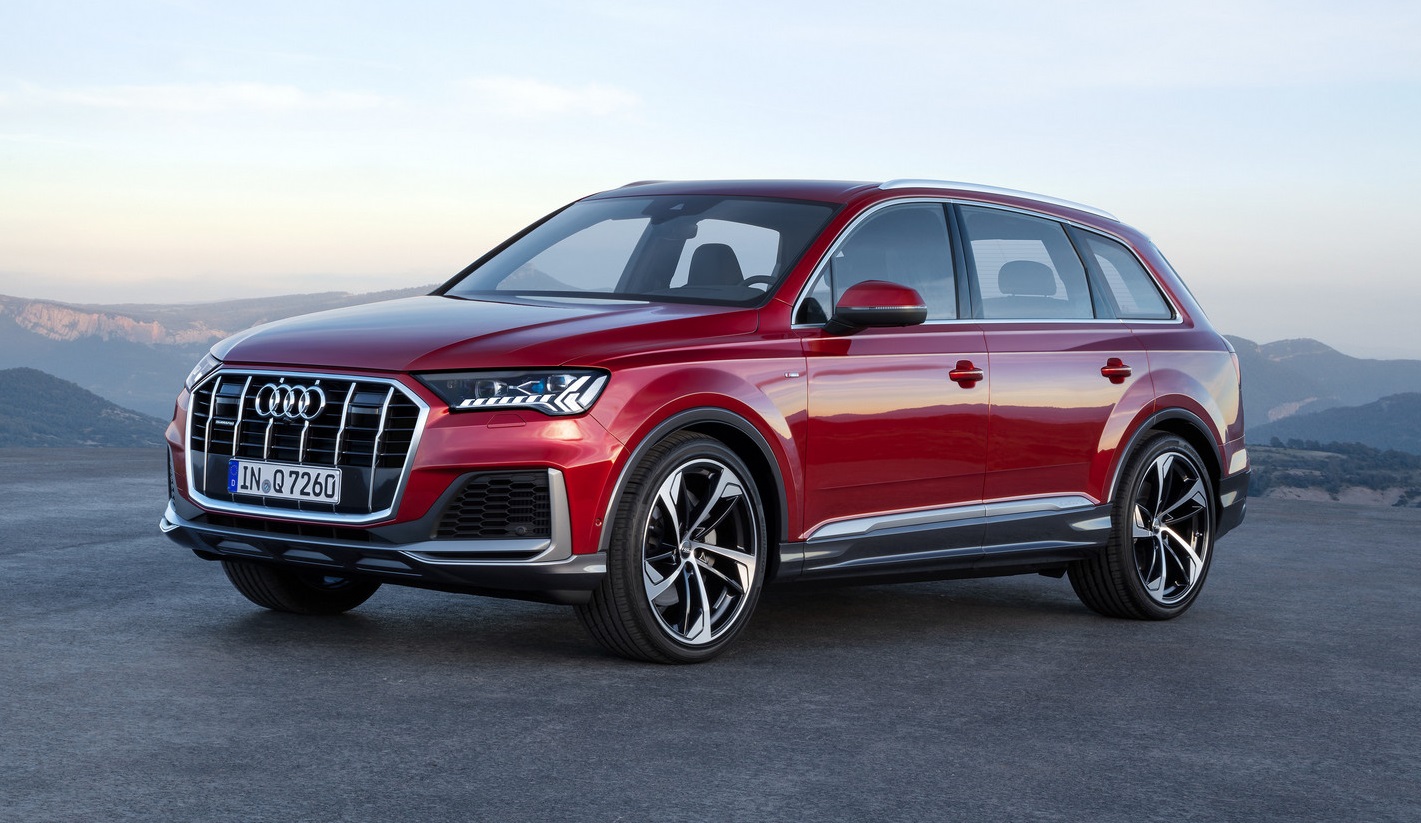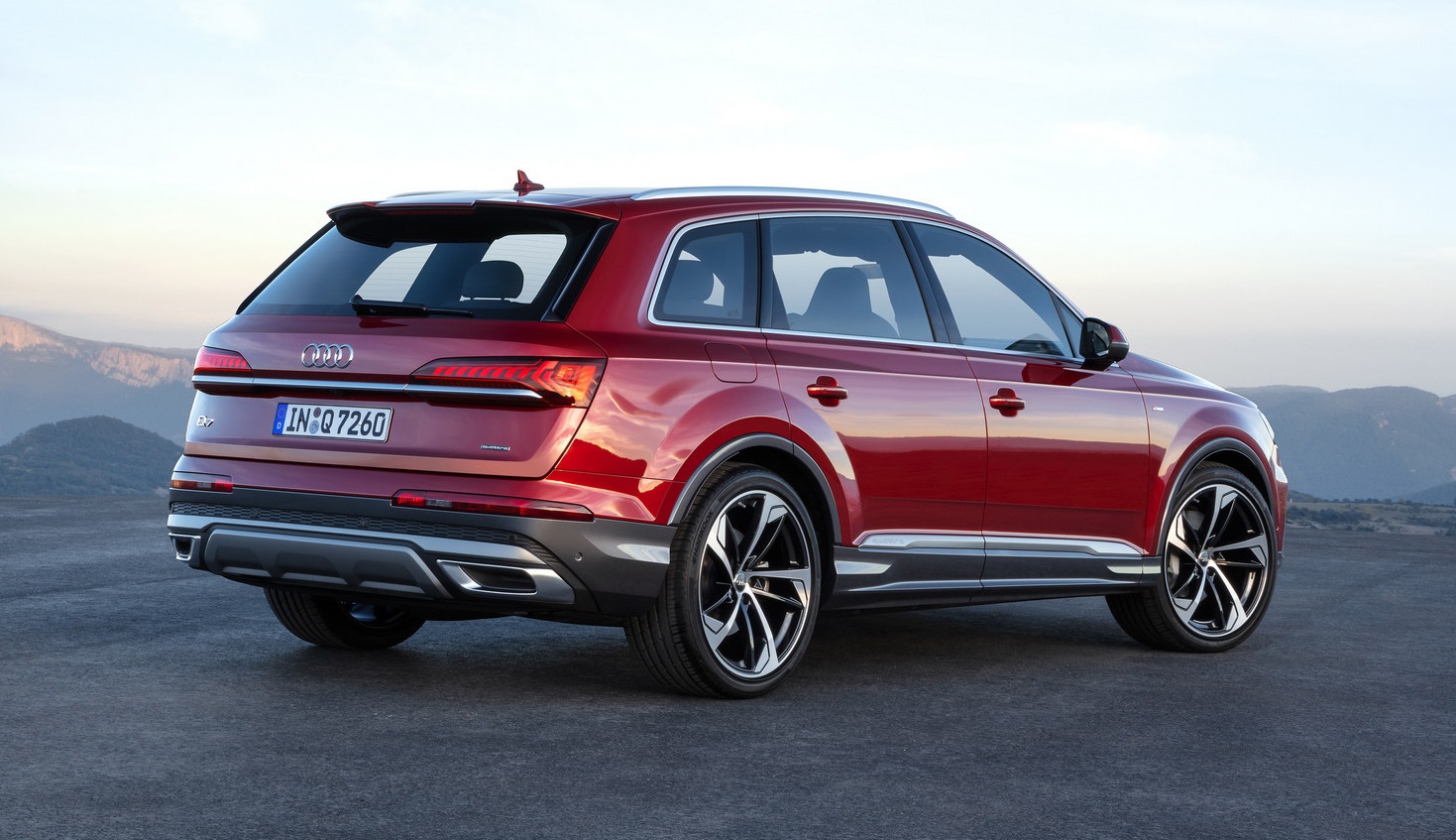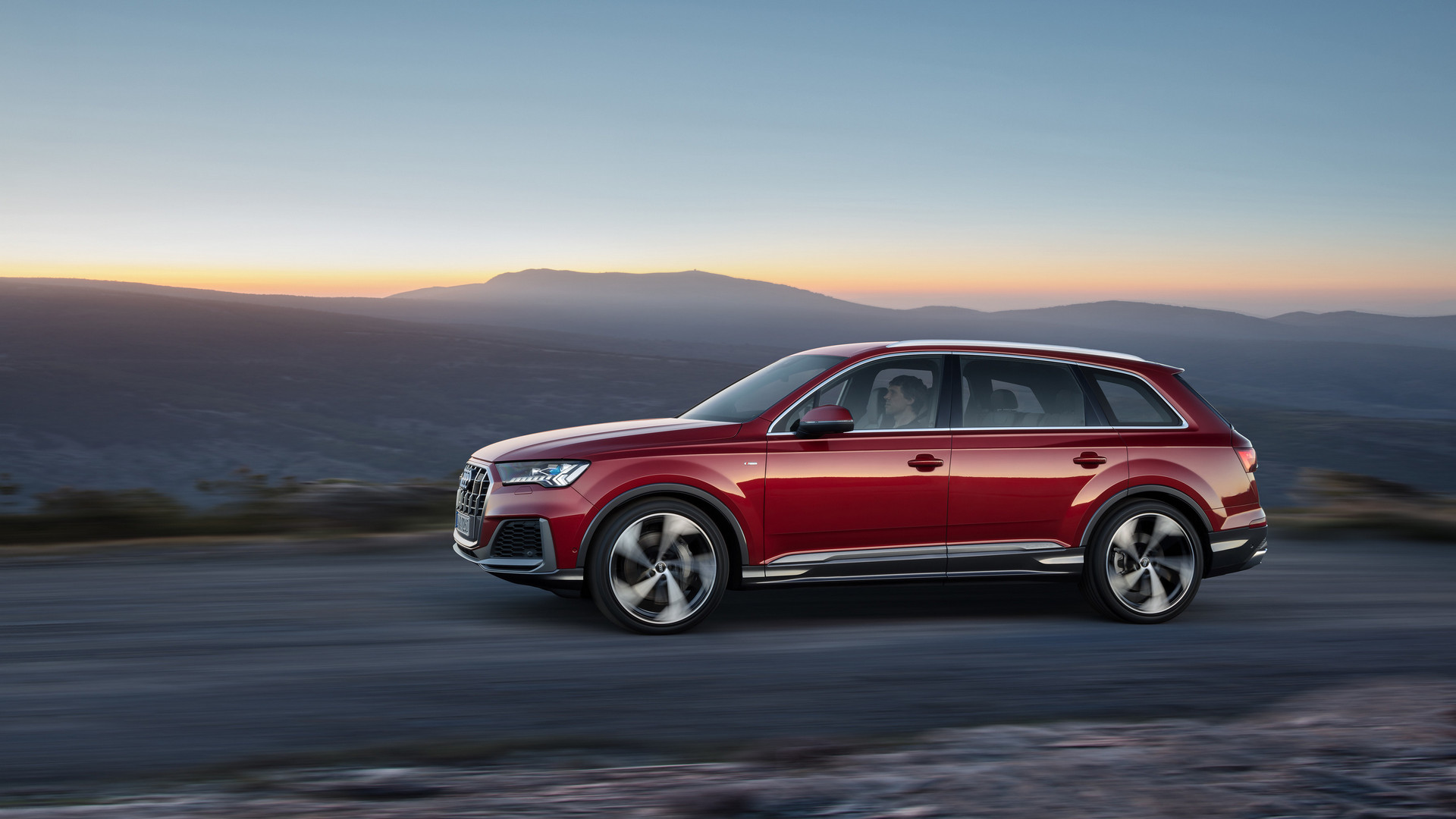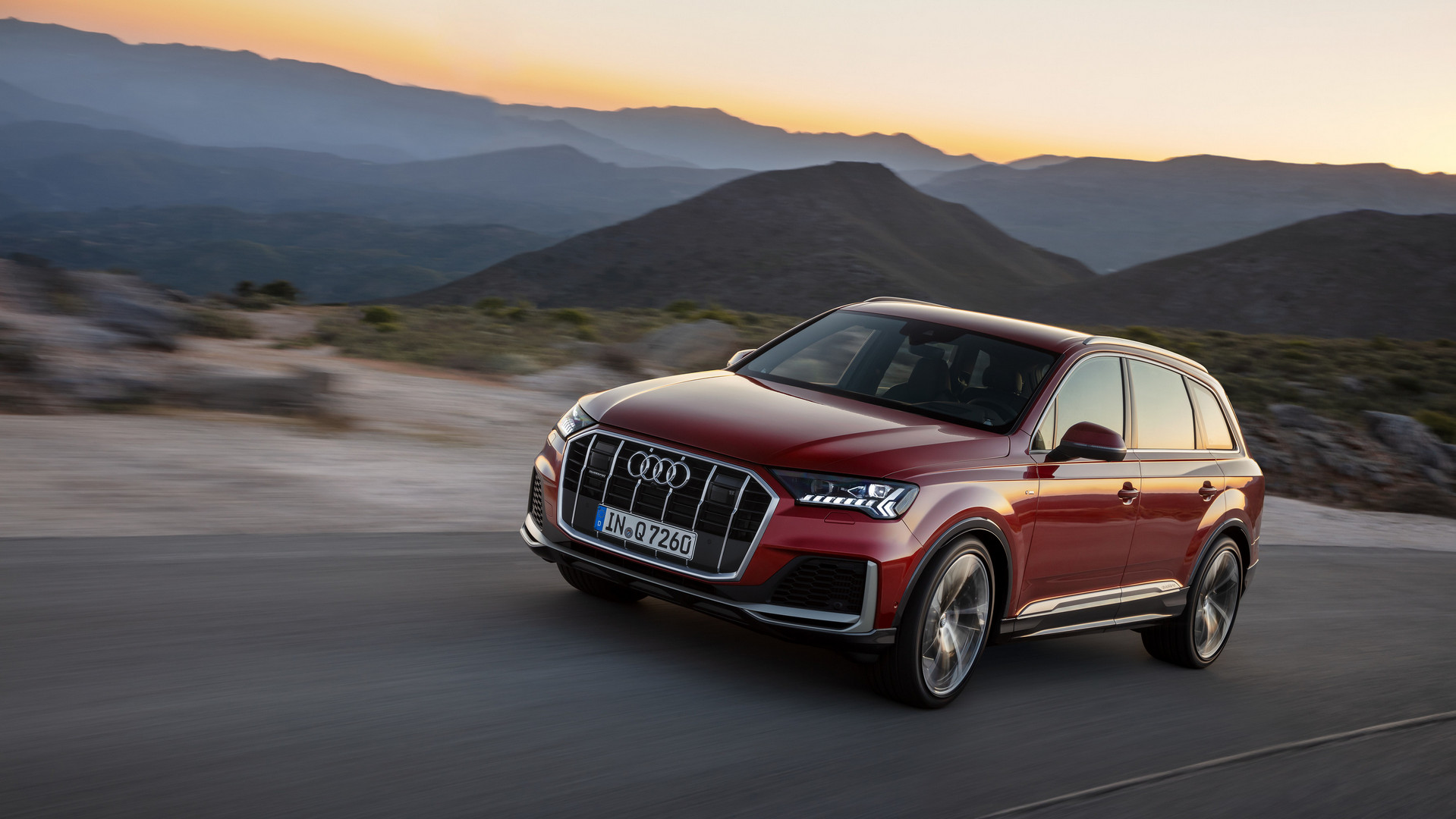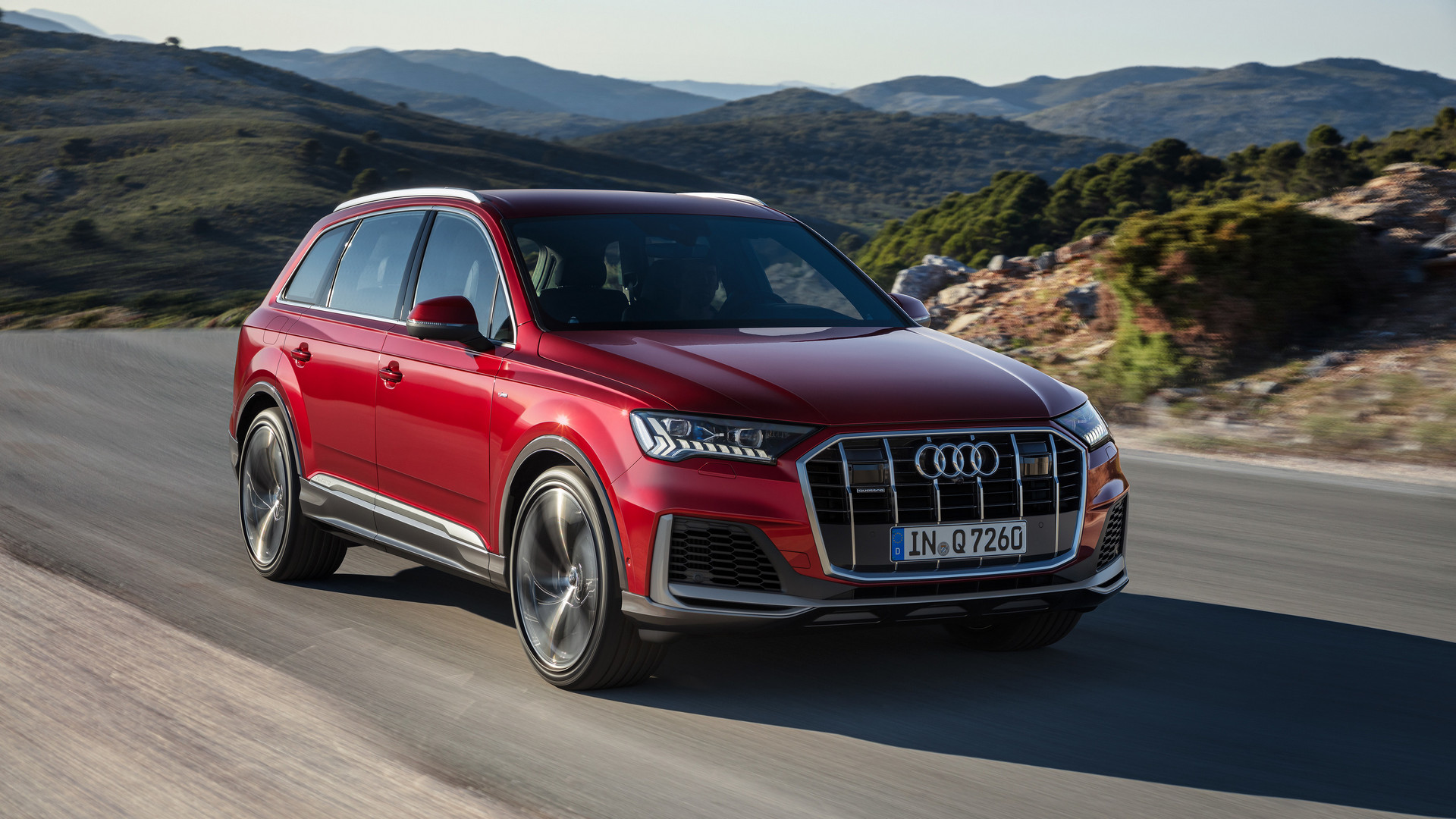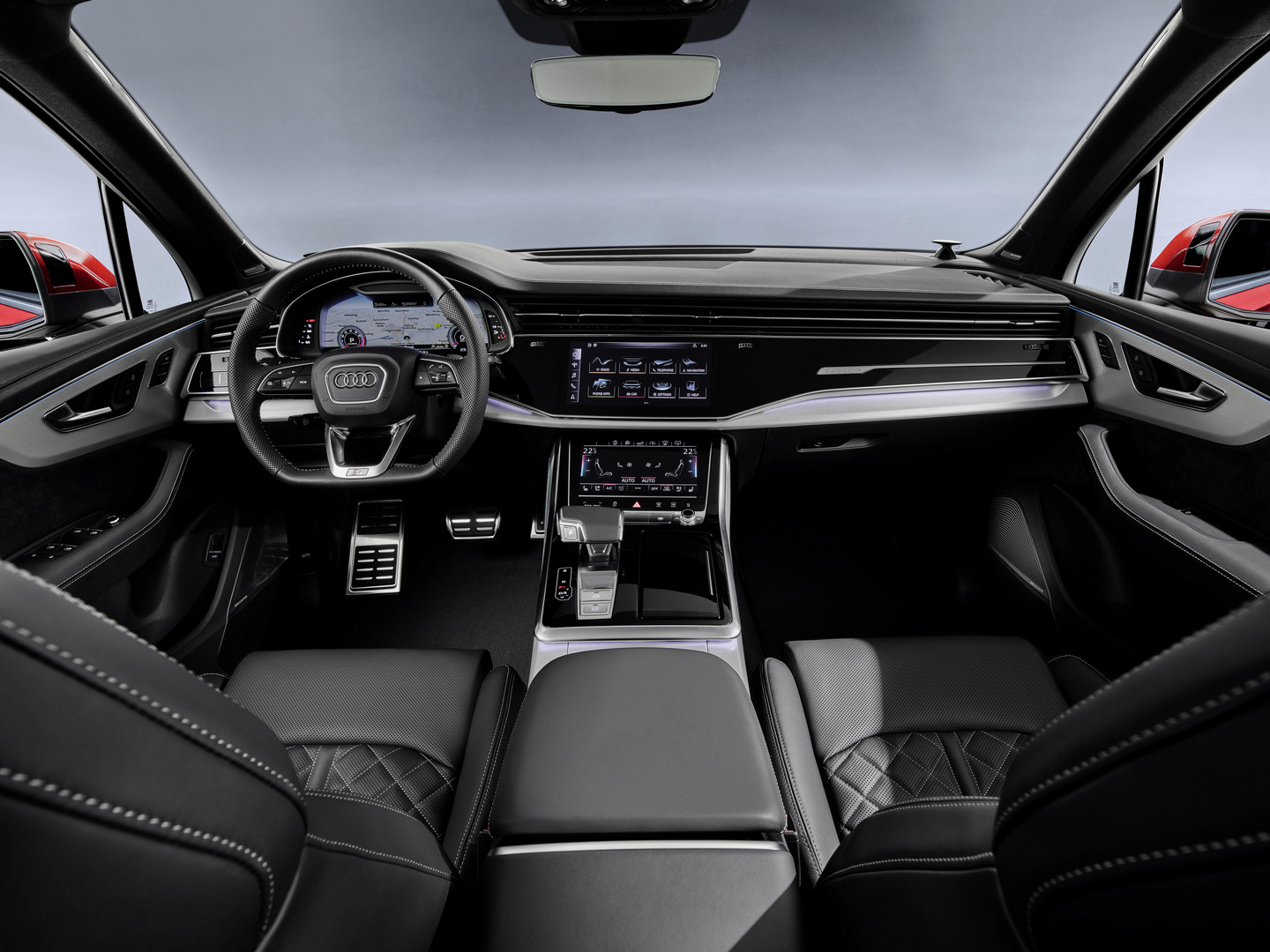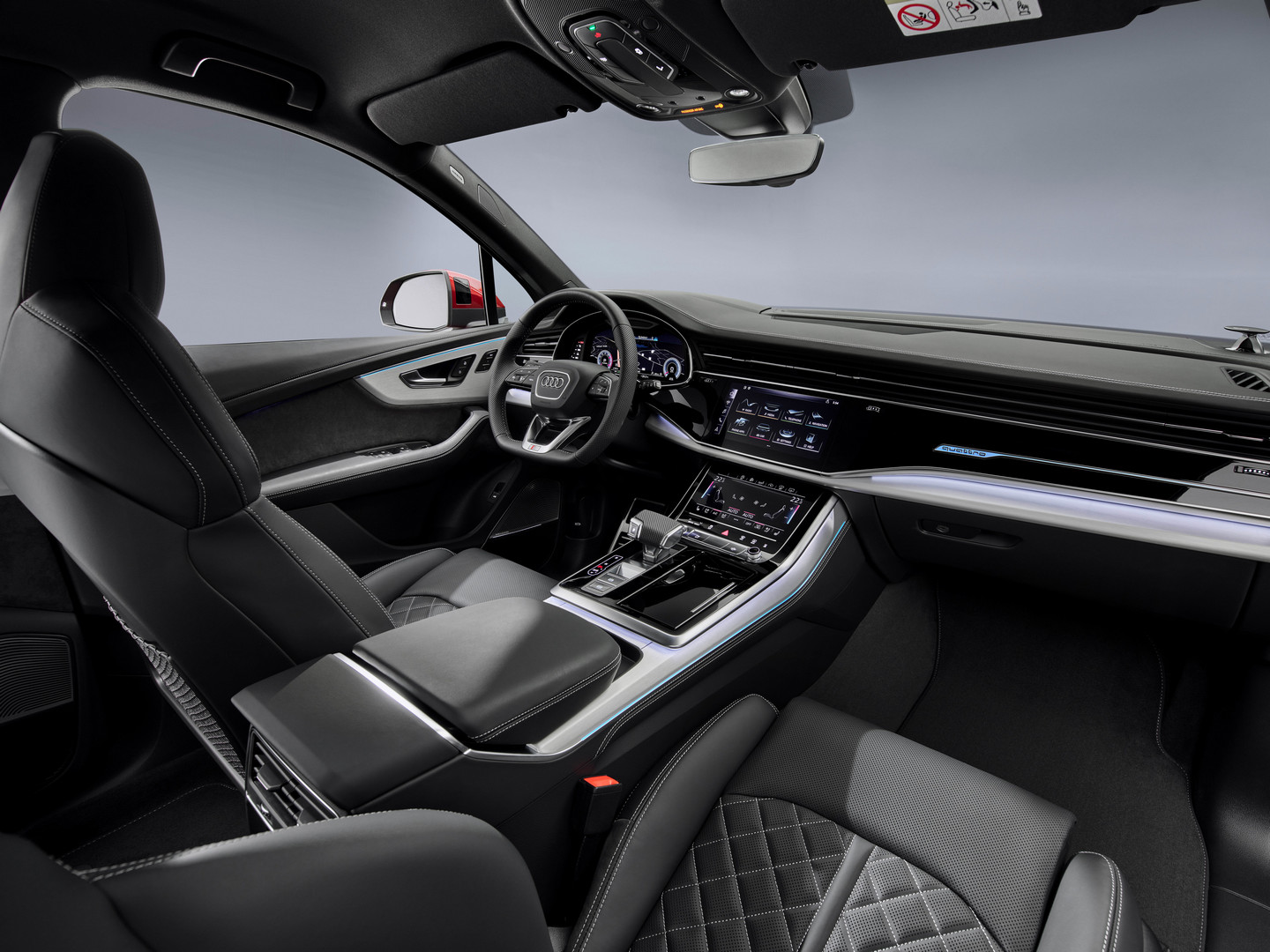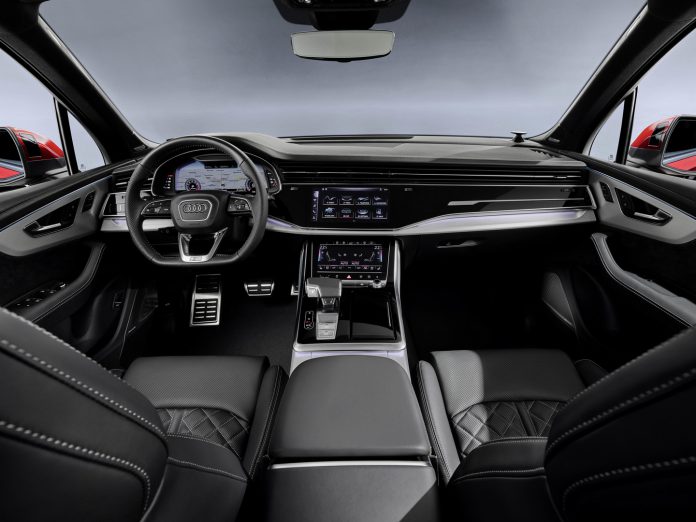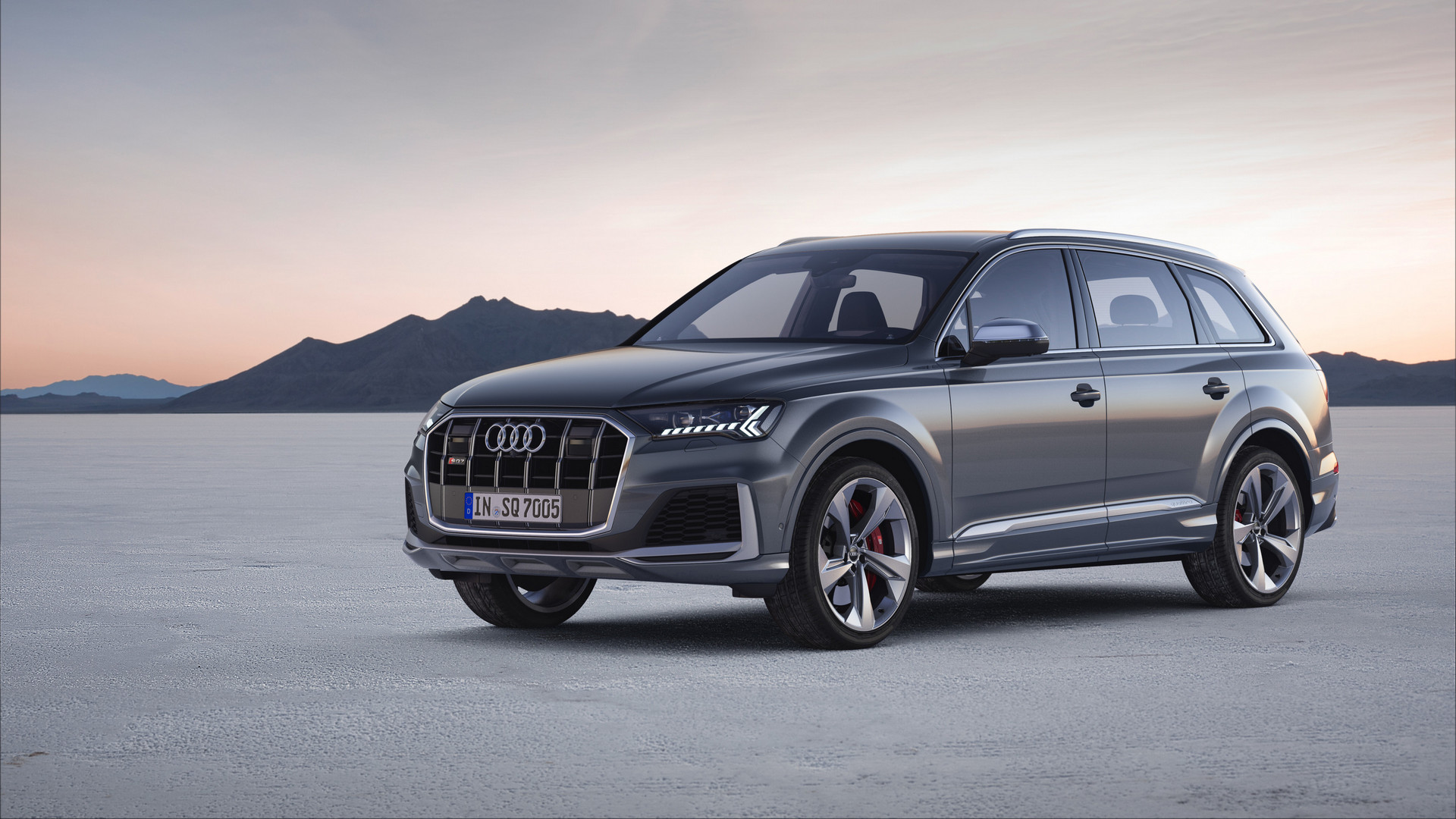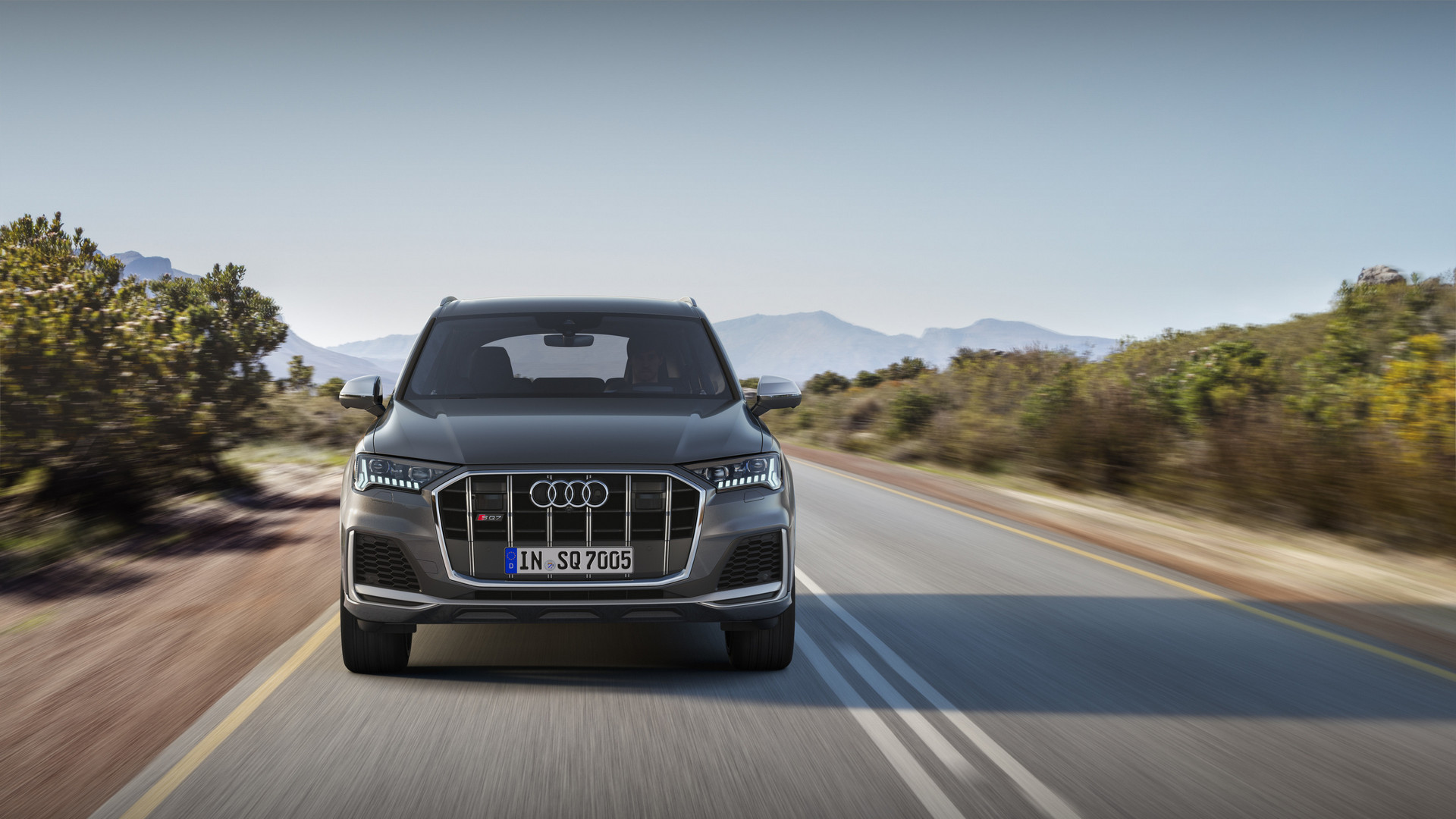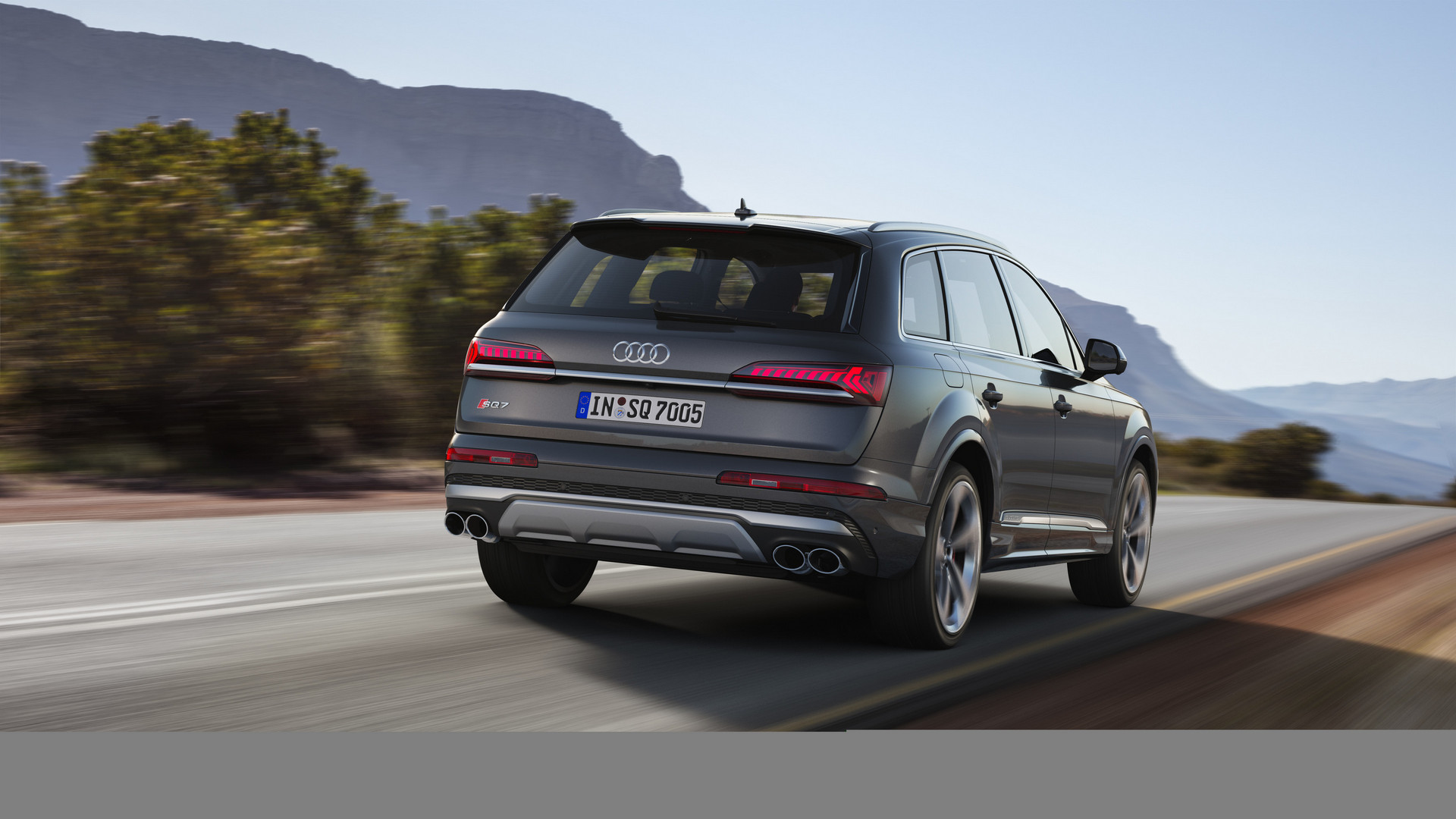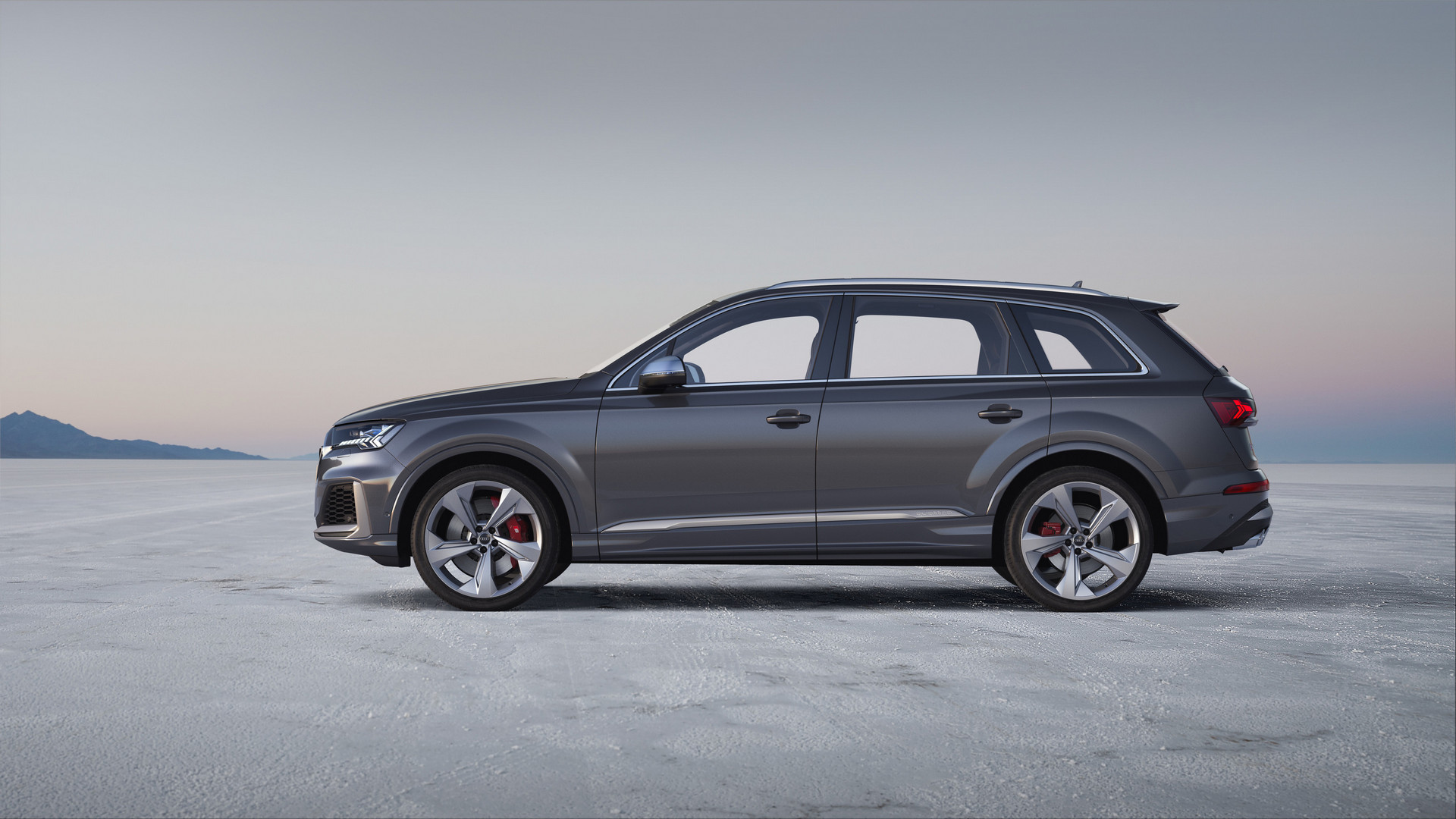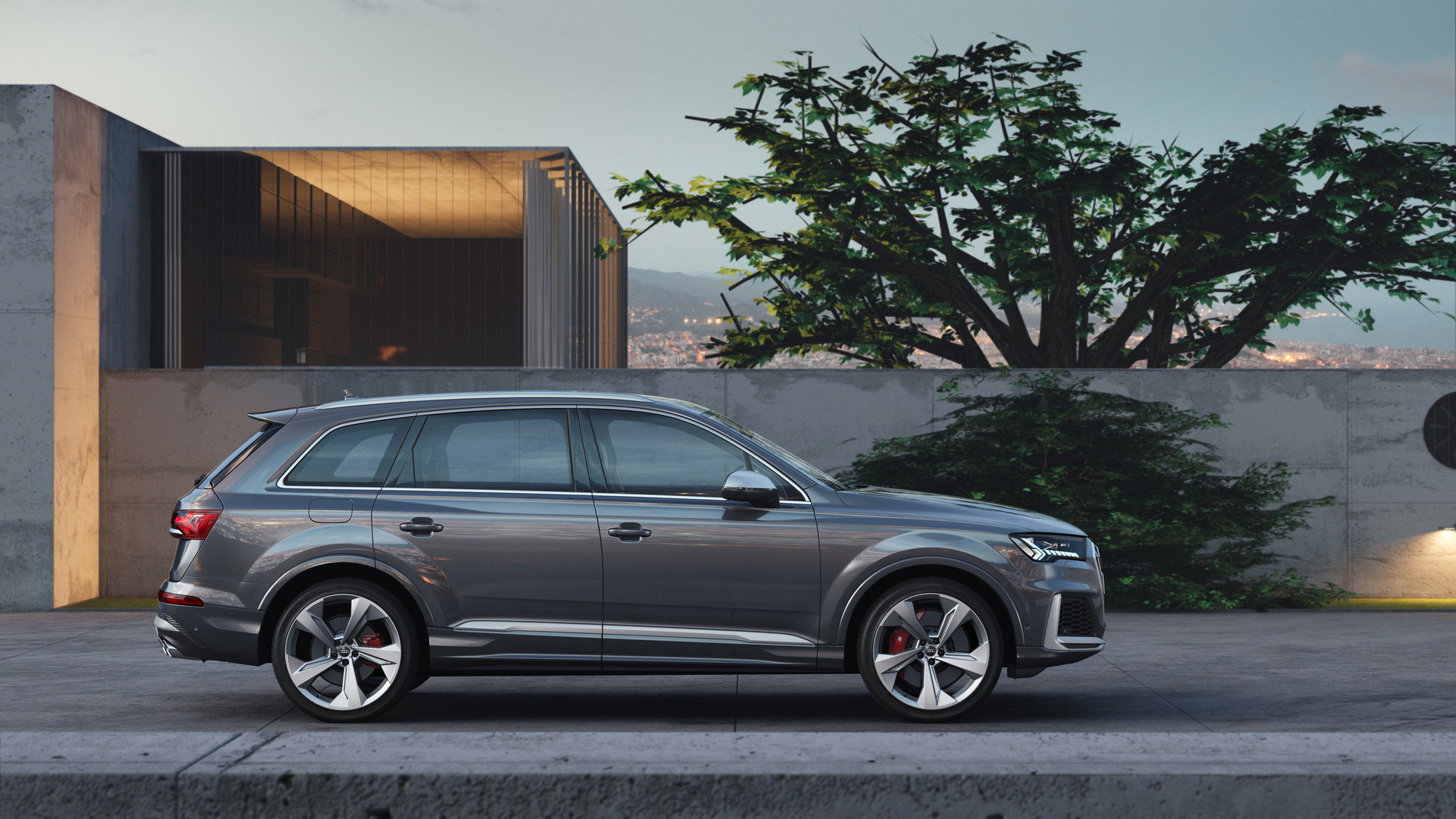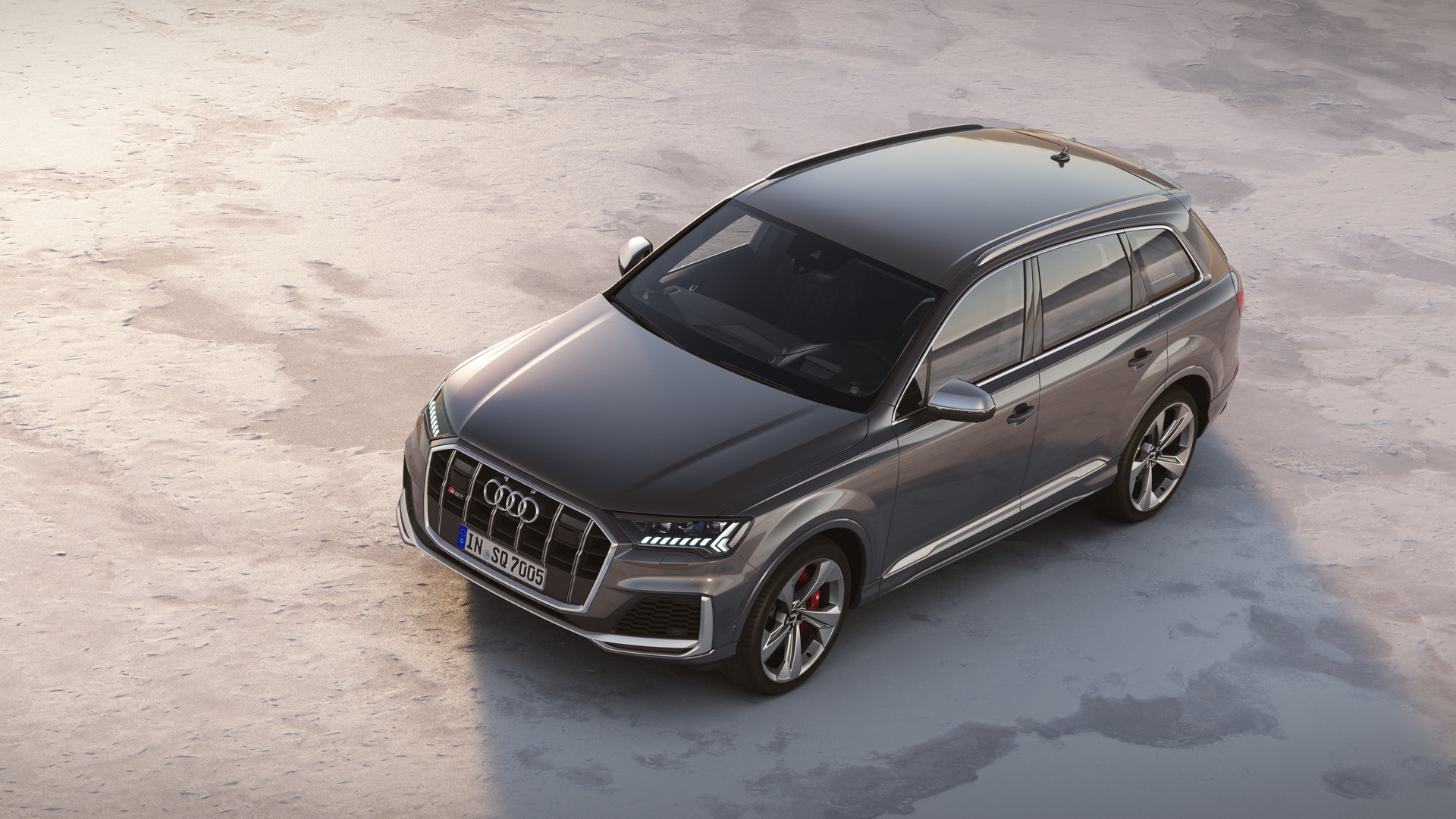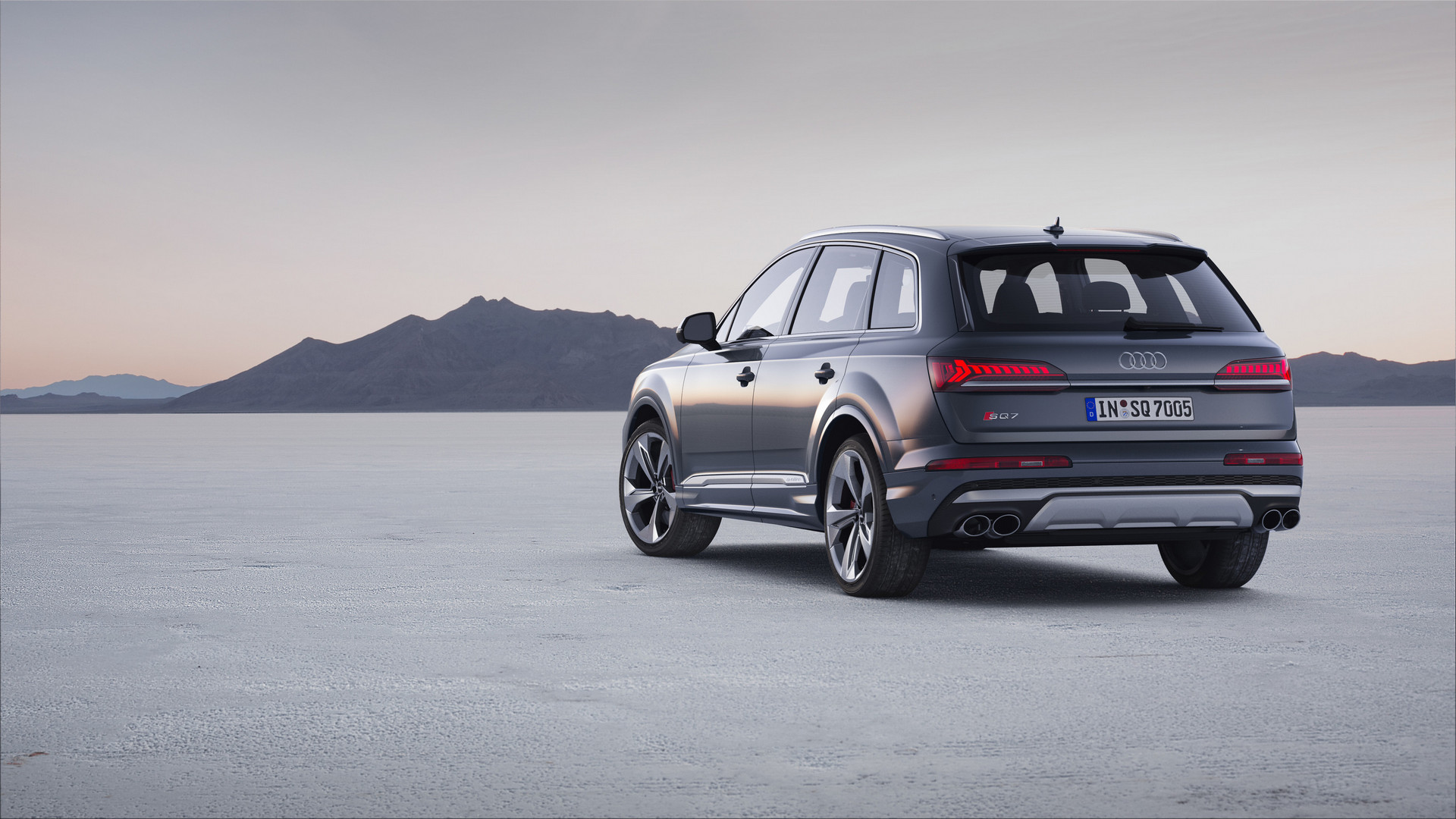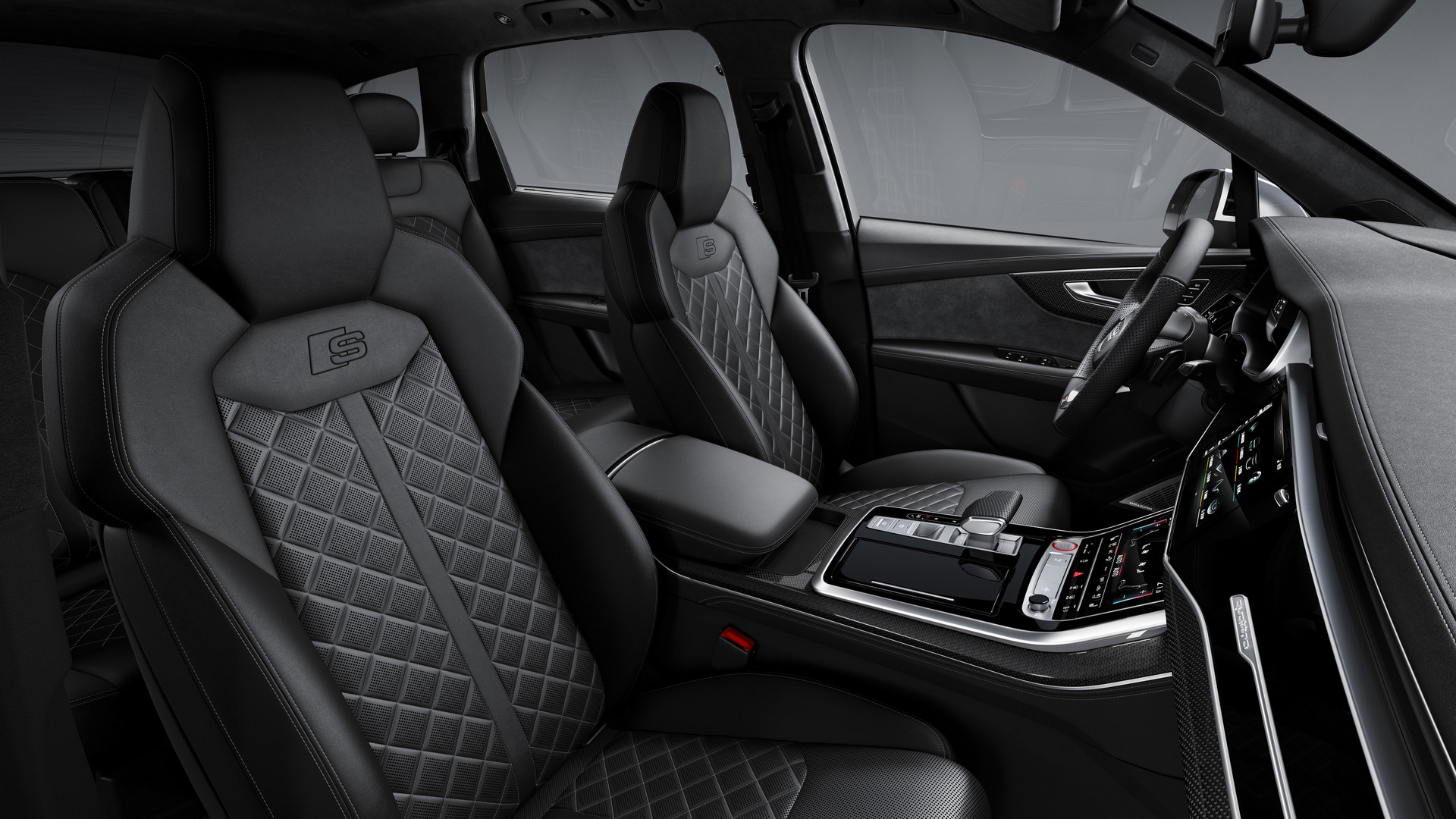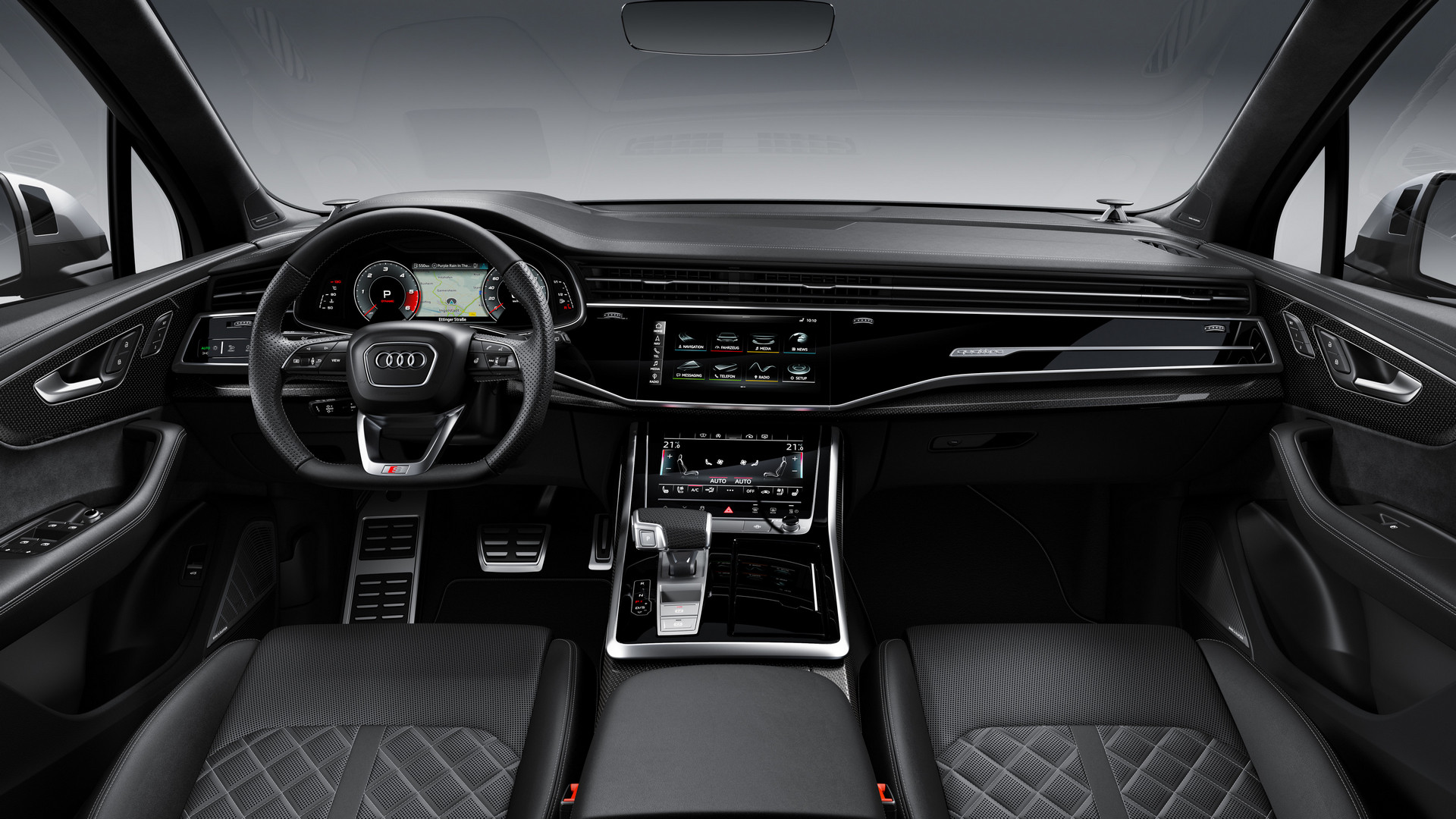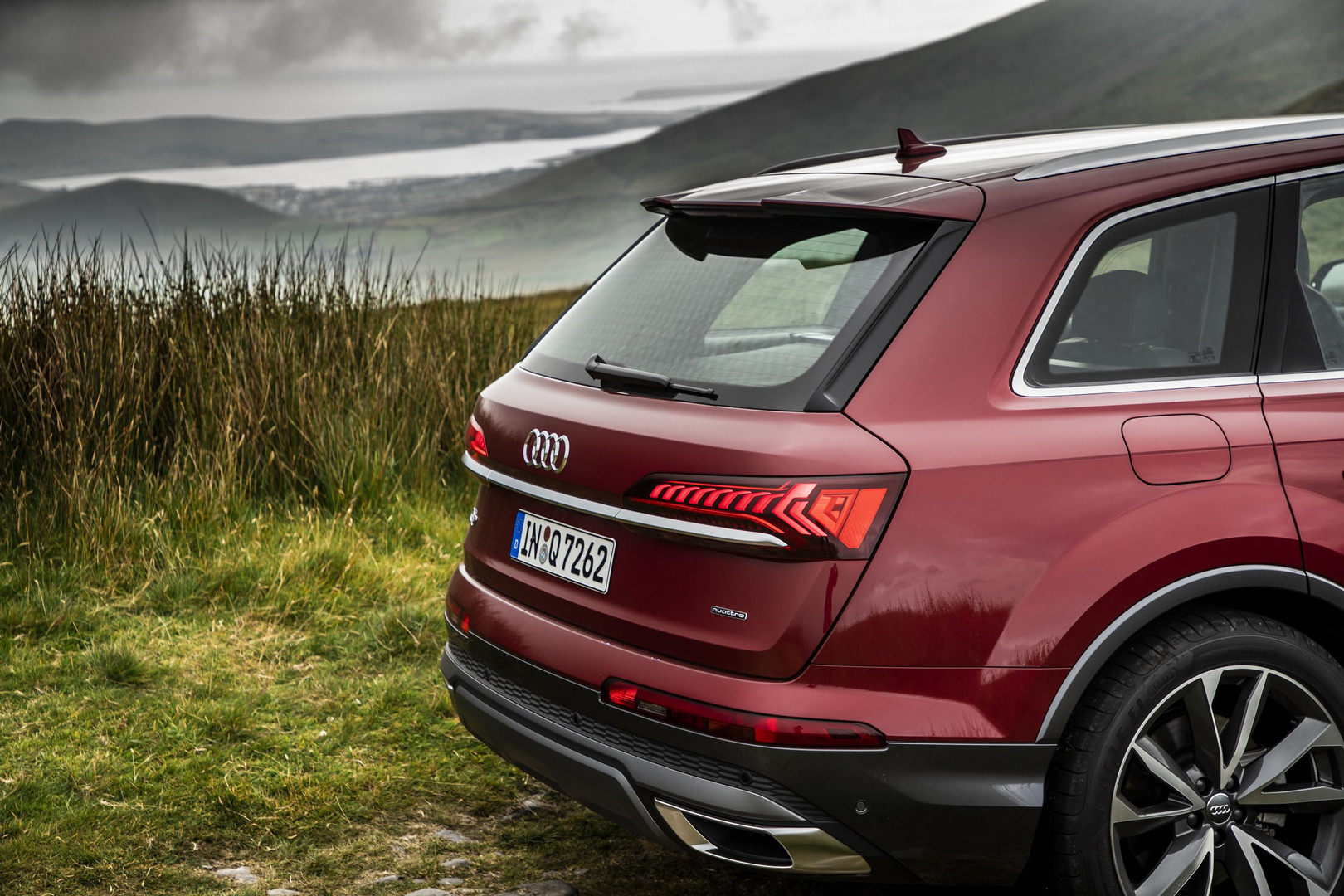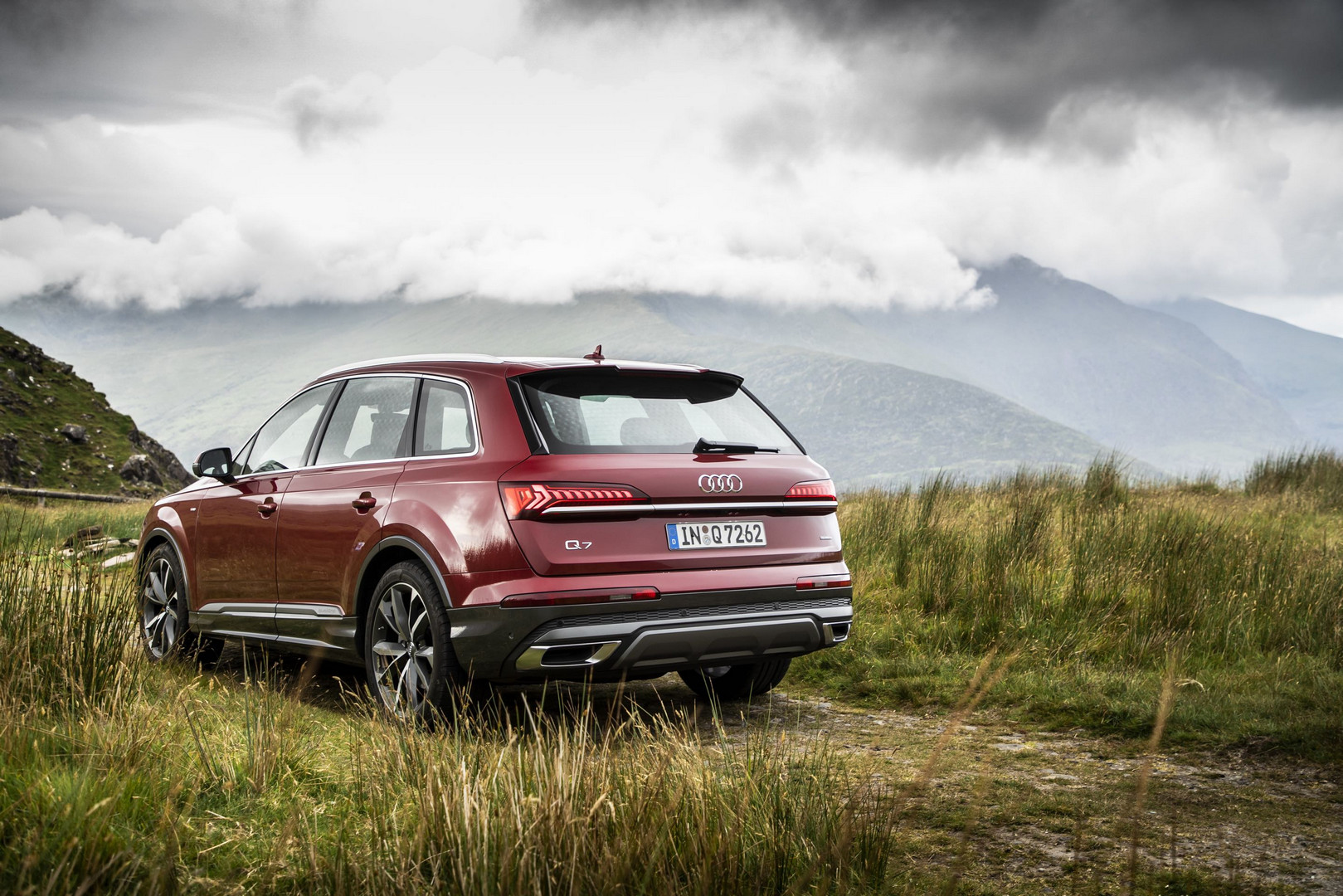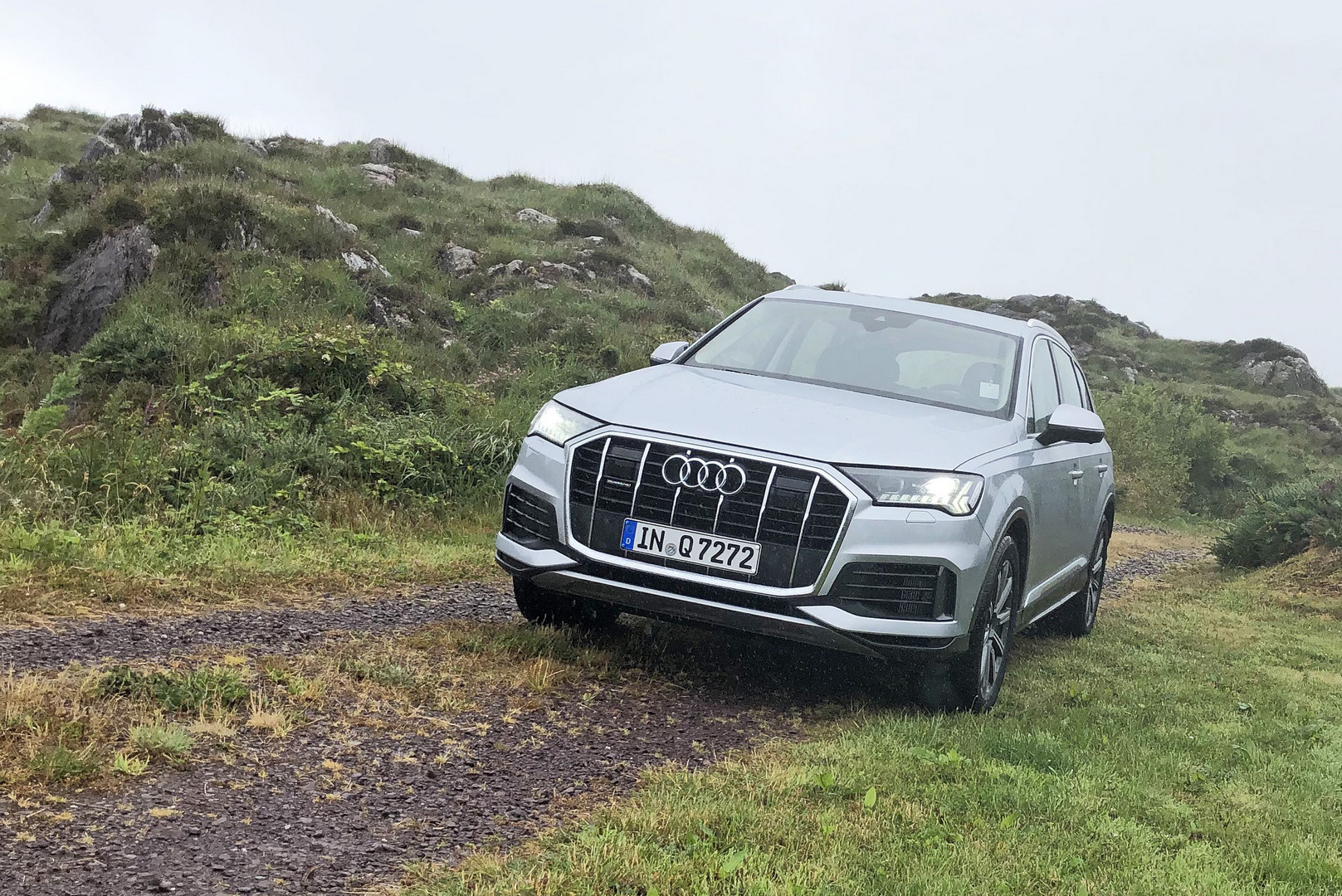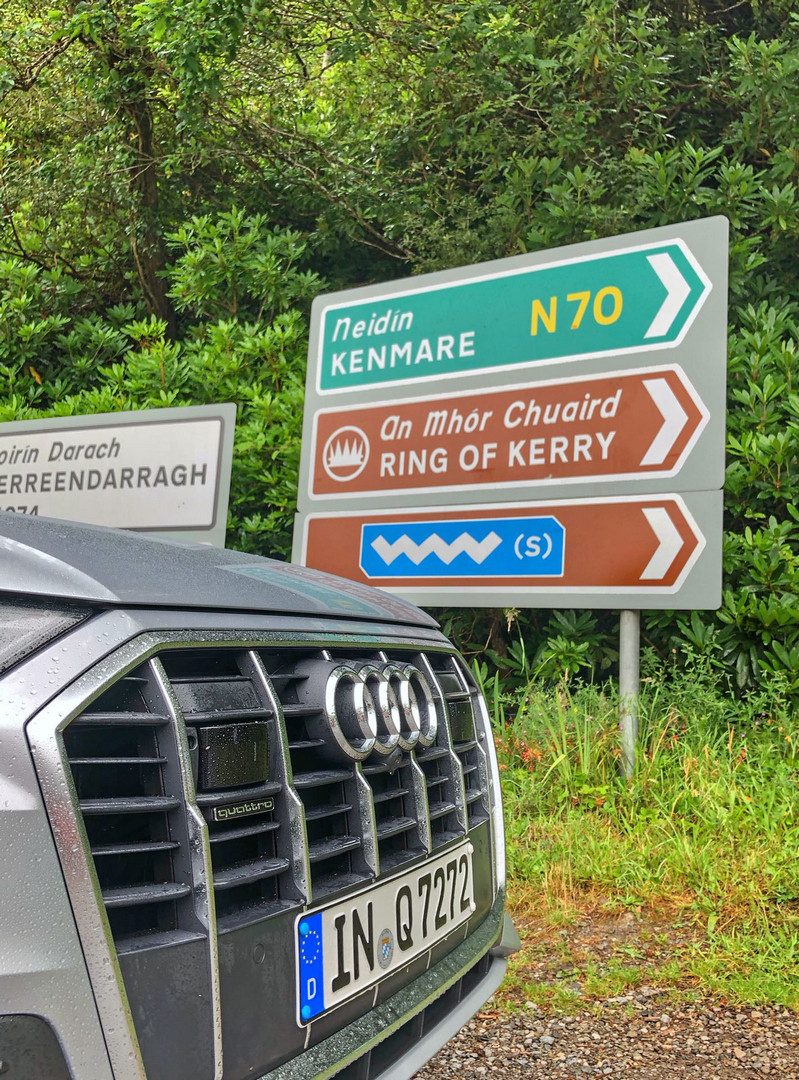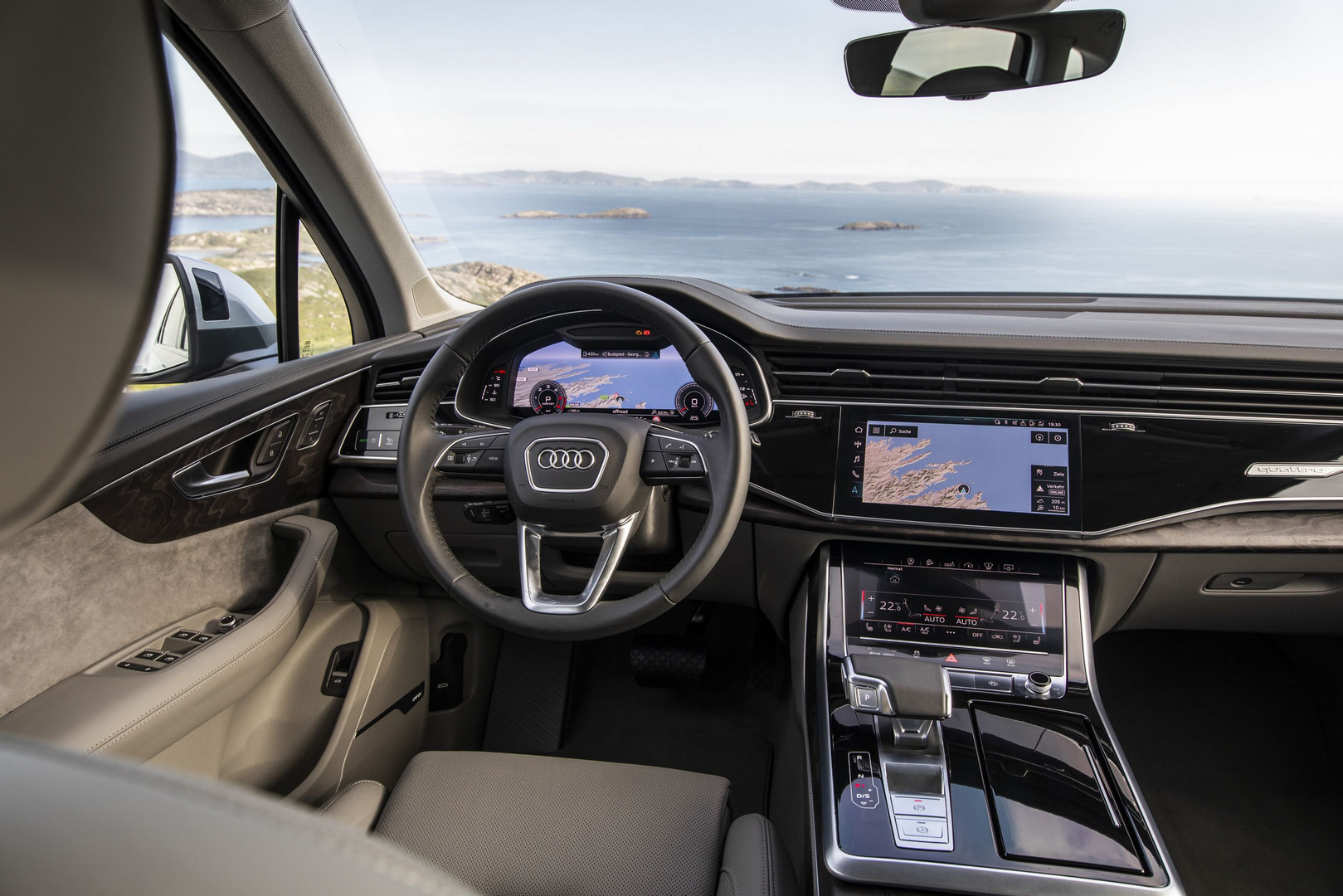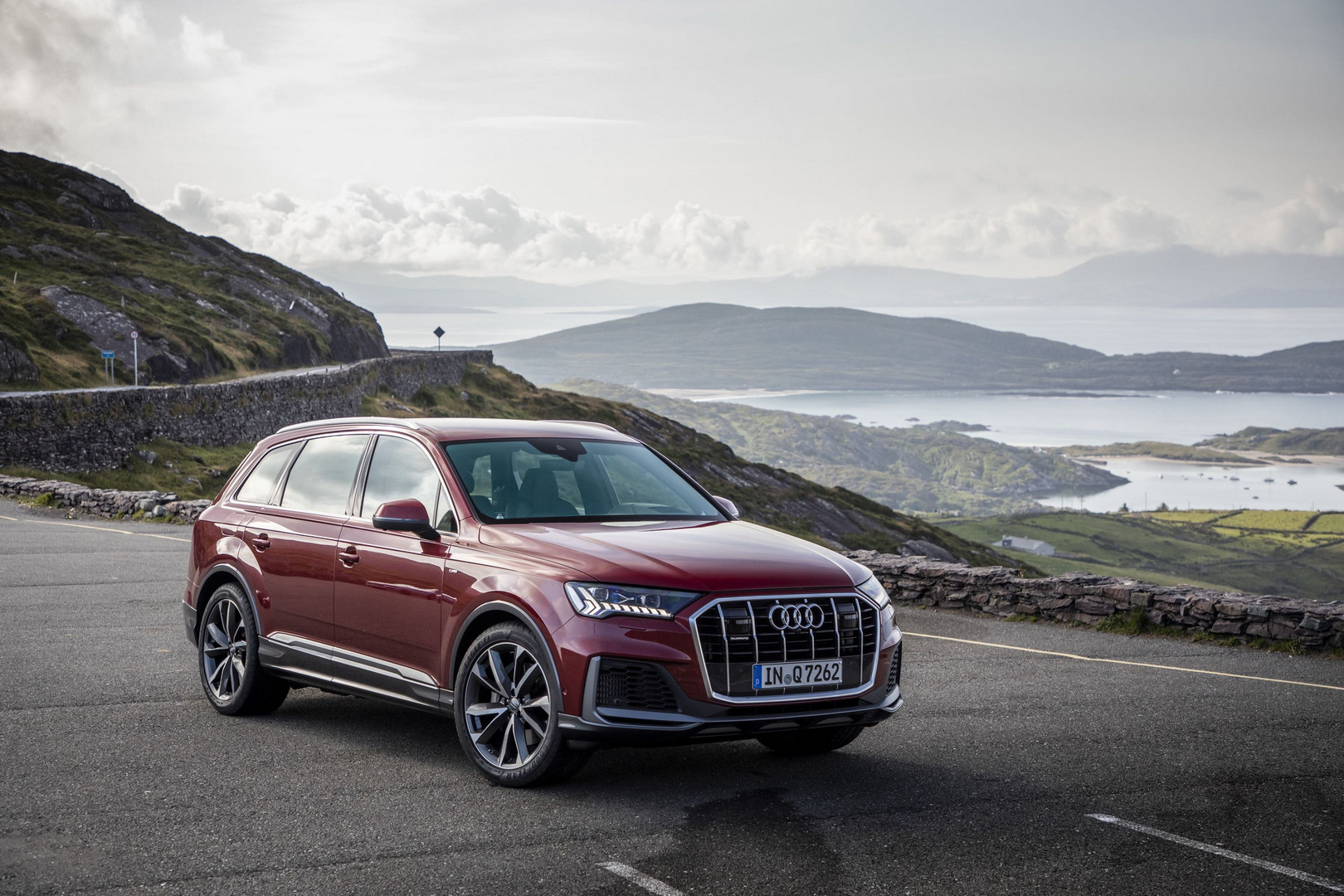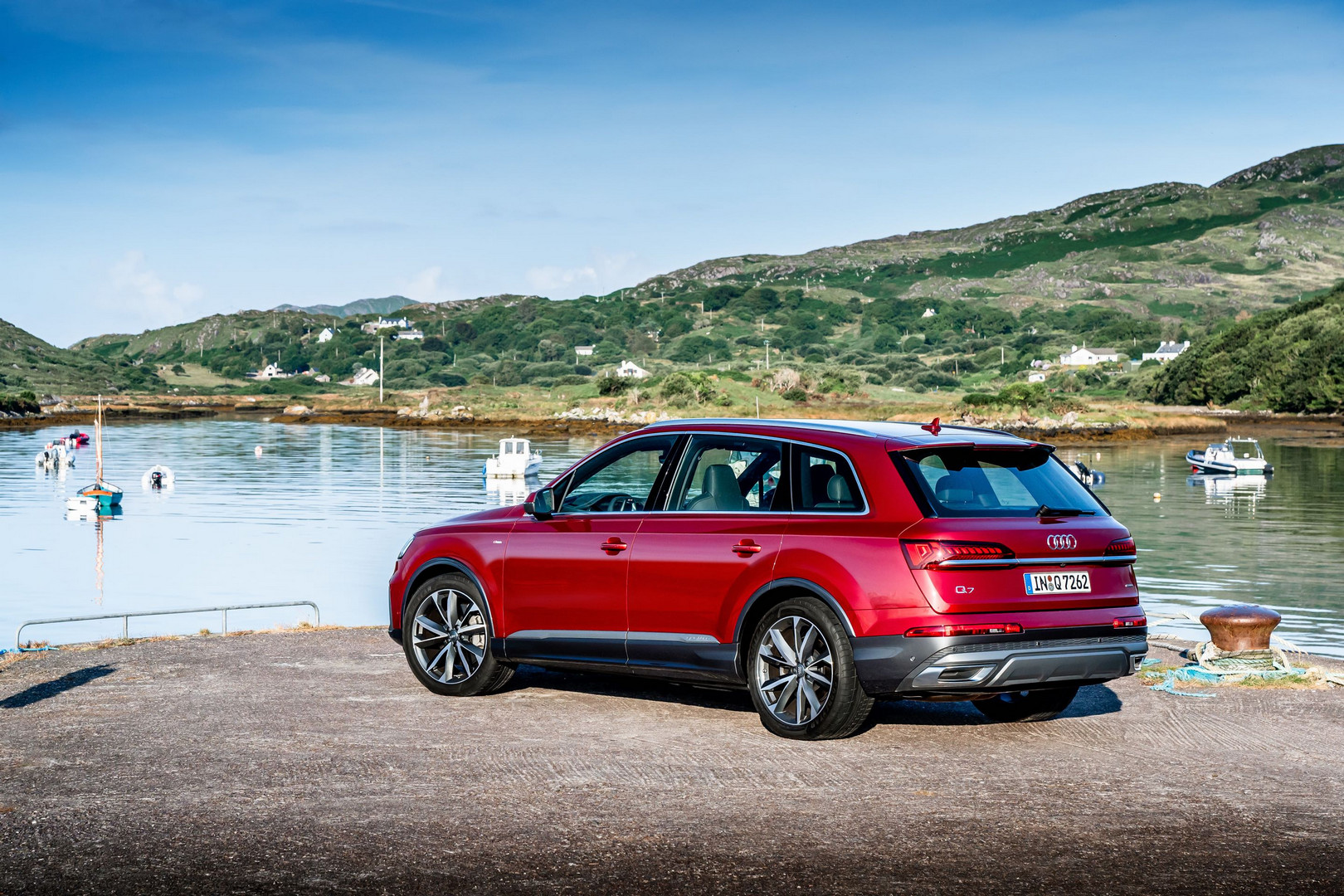Flashback to 2015: Audi launches the second-generation Q7. The upmarket SUV was long in the coming: The company worked on it for six years; three board members for research and development were involved. As a pioneer of the MLB Evo platform, it was a technological marvel. In terms of styling, it fell flat: Its boxy proportions and the pompous front grille were clearly lacking in finesse.
Predictably, Audi claims the styling was “well received” and cites the agreeable sales figures as proof. Nevertheless, the company seized the opportunity and gave the Q7 a massive restyling for its mid-cycle freshening. The new front grille with its “fine” (Audi) finish now describes an octagon; the cladding on the side sill and doors visually lift the SUV up to lend it more off-roadish proportions. The 18-to-22-inch alloys stick out a bit farther, and the restyled taillights are now connected by a massive chrome bar. Yet elements of confusion remain: We are not quite sure why Audi refers to the Q7’s posterior as a “boat tail”, and we don’t understand why Audi claims it is squarely a BMW X5 competitor, when it is much closer in size to the new X7.
The interior has been completely redesigned: The slender, horizontal cockpit, which resembled the A4 and A5’s, has given way to a futuristic dashboard with vast glass screens. It is taken directly from the Q8 and is stylistically similar to the A6-A8 sedans. Owners can choose between three steering wheels, all of which of the conventional three-spoke variety, and the upholstery can now be accentuated by contrast stitching even in standard trim level.
The dark, touch-sensitive screens in the center console are a defining design feature of the Q7; their operation is self-explanatory. However, those unsightly fingerprints have aesthetes constantly polishing the glass surfaces with microfiber cloth. Voice activation is the alternative, but we regret that the slightly dystopian surveillance device “Alexa” is included in every Q7.
Depending on the market, Audi will offer a variety of powertrain choices, but all of them share the same eight-speed automatic and a capable all-wheel drive system. In Germany, the Q7 starts with two 48-volt-hybridized versions of the capable and finally super-clean 3.0-liter V6 TDI engine. The entry-level version has 231 horsepower and sprints to 100 kph in 7.1 seconds, topping out at 229 kph. Consumption, in the ever-more-strict official cycle, is less than 7 litres per 100 kilometers. The 286-horsepower version of the same engine is curiously even more efficient, and it breaks the 100-kph mark in just 6.3 seconds, with a terminal velocity of 241 kph.
Both diesels, unlike the upcoming V-6 petrol engines and especially unlike the vaunted plug-in hybrid, can reach enormous ranges before refueling. But real power junkies might wish to wait for the SQ7 TDI, which will be powered by a 435-horsepower V-8 turbodiesel. Non-diesel markets will get a V-8 petrol engine.
Audi offers three types of suspension: a steel chassis, an air suspension with five trim positions, and a sportier variation of the air suspension. The roll stabilizer is now available for the all models, not just for the SQ7. And the optional four-wheel steering cuts the turning circle by almost a full meter. The more powerful V6 TDI can even be specified with ceramic brakes.
Full turn of the steering system is reduced from 2.9 revolutions to 2.4 revolutions; this required not only a software change, but entirely new steering gear. The more direct steering is a very positive change, and when fitted with the rear axle steering, the Q7 is surprisingly agile.
We testes the Audi Q7 on the Ring of Kerry roads in Ireland; they offer ideal conditions to check out the steering. Predictably, the rain was pouring down, but the attainable velocities are remarkably high, similar to performance sedans and a far cry from traditional off-roaders. Directly comparing the chassis systems, we’d argue that the optional air suspension and the rear axle steering are almost a must, with the superior agility immediately felt. If it’s comfort you are looking for, go for smaller wheels. We think the 20s are a great compromise.
On its German home market, the new Audi Q7 can be ordered from EUR 66,900 upwards, with deliveries beginning in September. Other markets will follow in quick succession. Unless you get an incredible deal on a pre-facelift model, we’d say: Wait for the new one. The technological advances are more than trivial. And, perhaps even more importantly, you’ll look better in it.

